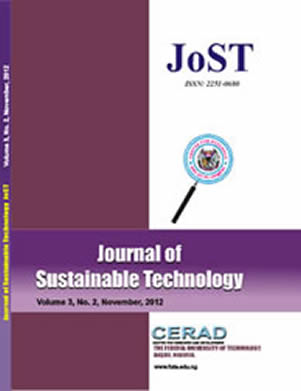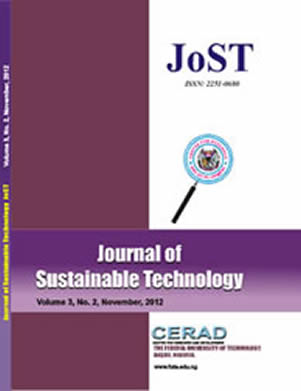Optimisation of osmotic dehydration of tomato (Solanum lycopersicum) using
Response Surface Methodology (RSM) was carried out in this study. The effects of three factors
namely, NaCl solution, dehydration time and dehydrating temperature on the lycopene content of
dehydrated tomato were investigated. A total of 17 experimental runs were conducted. The Box-
Behnken design of RSM was employed and the best model obtained was two-factor interaction (2FI)
polynomial. The analysis of variance (ANOVA) test showed that the effect of model terms (NaCl,
dehydration time and dehydrating temperature) on the lycopene content as well as the model were
significant (Pd”0.05). The optimum factors for the osmotic dehydration of tomato were obtained at
40% NaCl, 30 minutes dehydration time and 30oC dehydrating temperature, which gave lycopene
content of 0.0141 mg/100 g at the optimum conditions. In contrast, fresh tomato had lycopene
content of 0.0165 mg/100 g while the control, cabinet dried tomato had lycopene content 0.0148
mg/100 g. The R2 and R2
adj values of 0.9518 and 0.9229 respectively indicated that the regression
model was good.
PAPER TITLE :OPTIMISATION OF OSMOTIC DEHYDRATION OF TOMATO (SOLANUM LYCOPERSICUM)
JOURNAL Of SUSTAINABLE TECHNOLOGY | VOLUME 1 NUMBER 5 2014
Paper Details
- Author(s) : *AWOLU, O.O., AYENI, O. and SODIPO, M.O.
- Abstract:



